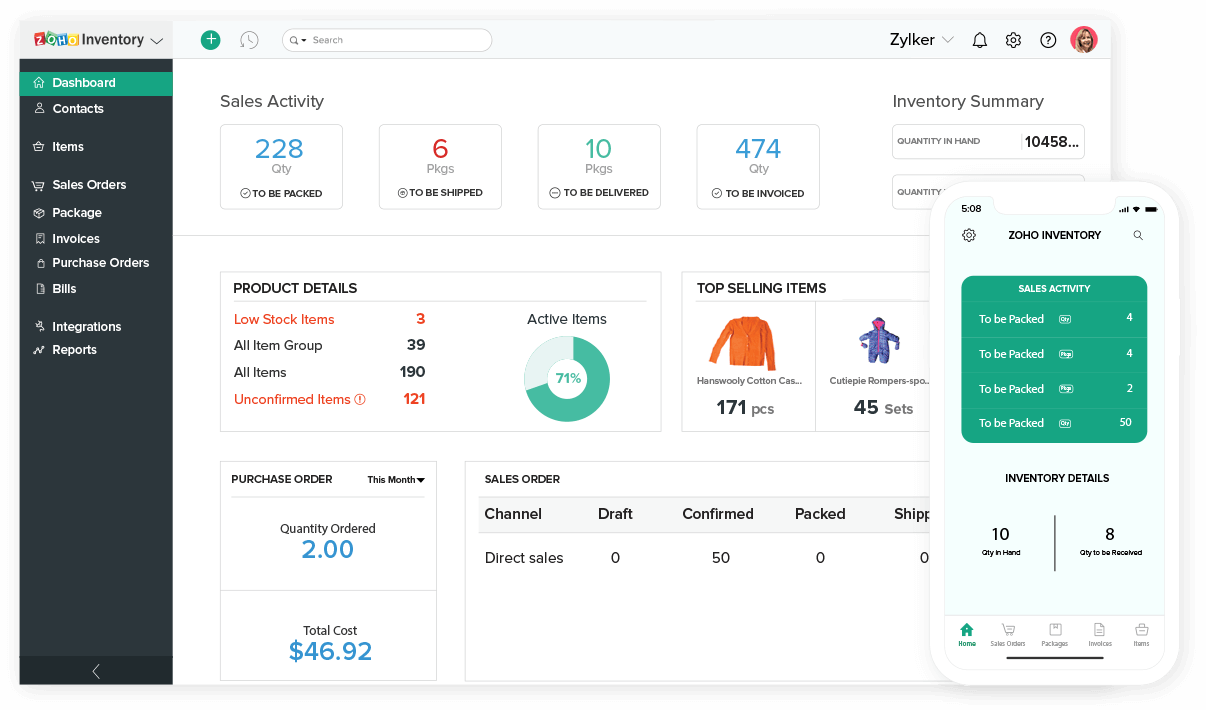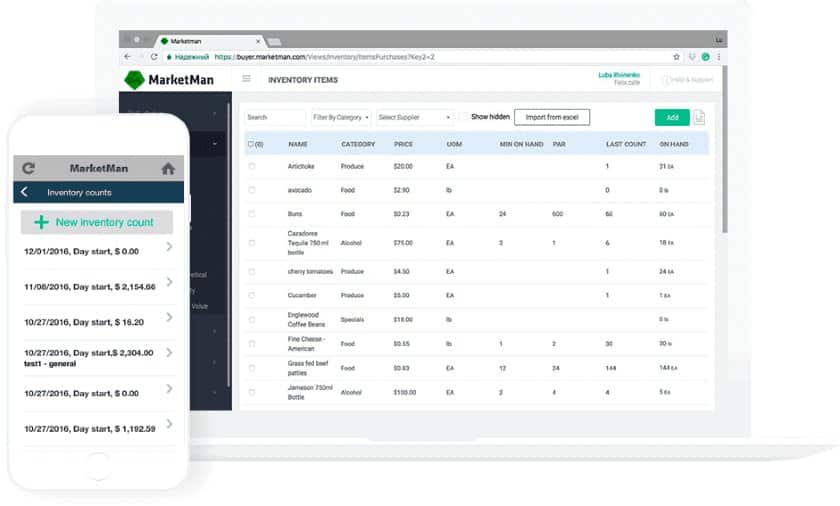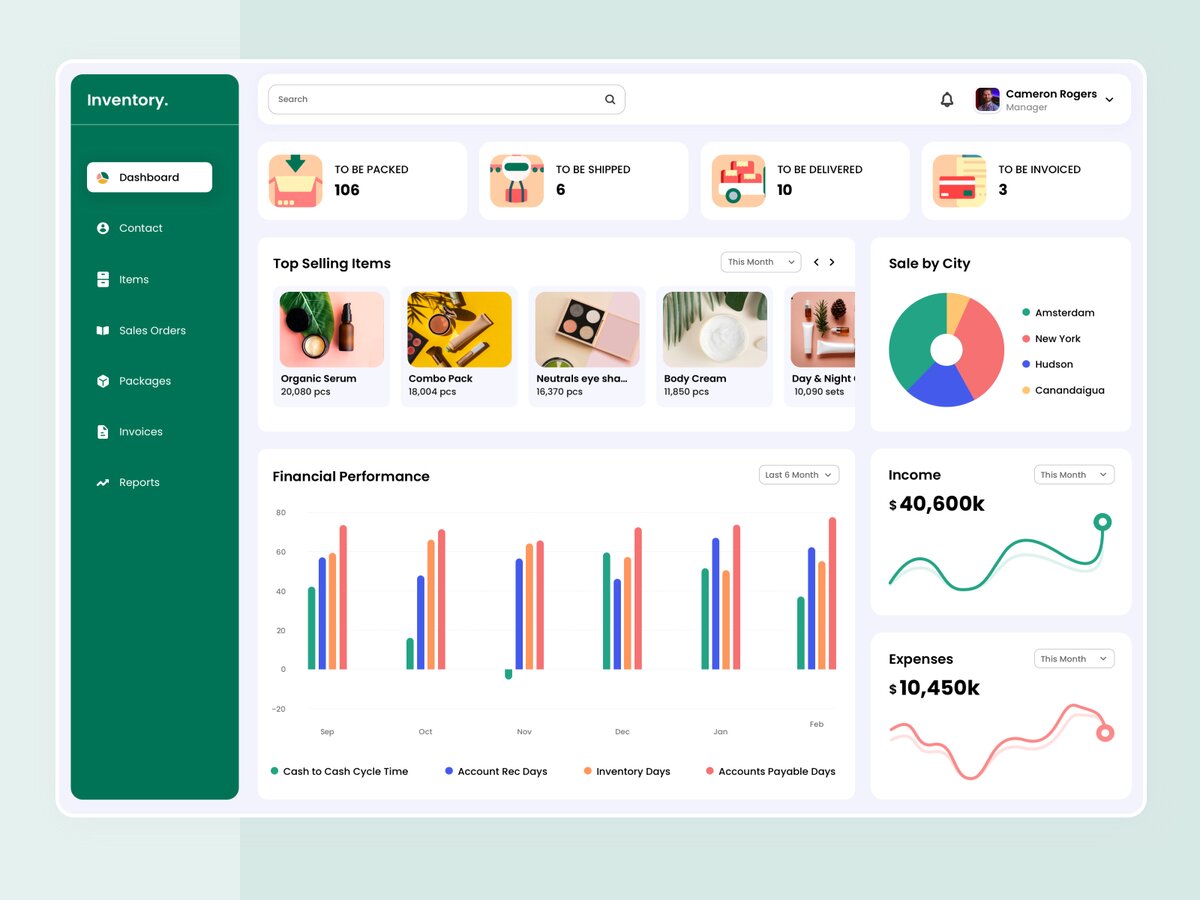Best Sales and Inventory Software: Streamline Your Business Operations
Are you a small business owner struggling to manage your sales and inventory? Do you spend countless hours tracking stock, processing orders, and generating reports? If so, you’re not alone. Many small business owners find themselves overwhelmed by these tasks. But what if there was a way to simplify these processes and free up your time to focus on growing your business? The answer is sales and inventory software.
Sales and inventory software is a type of software that helps businesses manage their sales and inventory. It can automate many of the tasks associated with these processes, such as tracking stock levels, processing orders, generating reports, and managing customer relationships. By automating these tasks, sales and inventory software can save businesses time and money.
There are many different sales and inventory software programs available on the market. Choosing the right one for your business can be challenging. To help you make the right decision, we’ve compiled a list of some of the best sales and inventory software programs available.
Key Features to Look for in Sales and Inventory Software
Before we dive into specific software options, let’s explore the key features you should look for when choosing a sales and inventory system. This will help you narrow down your choices and select the perfect fit for your business needs.
-
Inventory Management: This is the core function. Look for features like real-time stock tracking, low-stock alerts, automated reordering, and the ability to manage multiple locations. Keywords: inventory tracking, stock management, real-time inventory, low stock alerts, multi-location inventory, automated reordering, inventory control

Sales Management: The software should streamline your sales process. Consider features like point-of-sale (POS) integration, order management, customer relationship management (CRM) capabilities, and sales reporting. Keywords: POS integration, order management, sales reporting, CRM integration, customer relationship management, sales automation
-
Reporting and Analytics: Data-driven decisions are crucial. The software should provide comprehensive reports on sales, inventory, and customer behavior. Keywords: sales reports, inventory reports, customer reports, business analytics, data analysis, sales forecasting
-
Ease of Use: The software should be intuitive and easy to learn, even for users with limited technical experience. Keywords: user-friendly interface, intuitive software, easy to use, simple navigation
-
Scalability: As your business grows, your software should be able to scale with it. Look for a system that can handle increasing data volumes and user accounts. Keywords: scalable software, business growth, data capacity, user management

-
Integration Capabilities: The ability to integrate with other business tools, such as accounting software, e-commerce platforms, and shipping services, is a huge advantage. Keywords: API integration, accounting software integration, e-commerce integration, shipping integration
-
Customer Support: Reliable customer support is essential, especially when you encounter problems or have questions. Keywords: customer support, technical support, help desk, online documentation

Top Sales and Inventory Software Options
Now, let’s explore some of the top contenders in the sales and inventory software market. Remember, the "best" software will depend on your specific needs and budget.
| Software Name | Key Features | Pricing Model | Best For |
|---|---|---|---|
| Zoho Inventory | Inventory management, order management, CRM, reporting | Freemium, paid plans | Small to medium-sized businesses |
| QuickBooks Online | Inventory tracking, accounting integration, invoicing | Subscription-based | Businesses needing integrated accounting |
| Xero | Inventory management, accounting integration, reporting | Subscription-based | Businesses needing strong accounting tools |
| DEAR Inventory | Inventory management, manufacturing, project management | Subscription-based | Manufacturing and wholesale businesses |
| Sortly | Inventory tracking, barcode scanning, image uploads | Subscription-based | Businesses with visual inventory needs |
This table provides a brief overview. Each software offers a more extensive feature set. It’s crucial to explore their websites for detailed information. Keywords: Zoho Inventory, QuickBooks Online, Xero, DEAR Inventory, Sortly, inventory software comparison, best inventory software
Choosing the Right Software for Your Needs
Selecting the ideal software hinges on several factors. Consider your business size, industry, budget, and technical expertise. Here’s a breakdown to guide your decision:
-
Business Size: Small businesses often benefit from user-friendly, affordable options like Zoho Inventory or Sortly. Larger businesses might need the scalability and advanced features of QuickBooks Online or DEAR Inventory. Keywords: small business software, enterprise software, scalable software
-
Industry: Certain industries have specific needs. For example, manufacturers benefit from software with robust manufacturing modules (like DEAR Inventory). Retailers might prioritize POS integration. Keywords: retail inventory software, manufacturing software, wholesale software
-
Budget: Software pricing varies considerably. Explore free trials or demos to assess value before committing. Keywords: affordable inventory software, free inventory software, inventory software pricing
-
Technical Expertise: Choose software with an intuitive interface if your team lacks technical expertise. Keywords: user-friendly software, easy-to-use software
Beyond the Software: Best Practices for Sales and Inventory Management
Even the best software won’t solve all your problems. Implement these best practices to maximize efficiency:
-
Regular Stock Audits: Conduct regular physical inventory counts to reconcile your software data with actual stock levels. Keywords: inventory audit, cycle counting, stocktaking
-
Accurate Data Entry: Ensure accurate data entry to avoid discrepancies and errors. Keywords: data accuracy, data integrity
-
Employee Training: Properly train your employees on how to use the software and follow best practices. Keywords: employee training, software training
-
Regular Software Updates: Keep your software updated to benefit from new features and security patches. Keywords: software updates, security patches
-
Data Backup: Regularly back up your data to prevent data loss. Keywords: data backup, data recovery
Advanced Features to Consider
As your business grows, you might need more advanced features:
-
Advanced Reporting and Analytics: Look for software that provides in-depth sales analysis, forecasting, and predictive analytics. Keywords: predictive analytics, sales forecasting, advanced reporting
-
Integration with E-commerce Platforms: Seamless integration with platforms like Shopify or WooCommerce is crucial for online businesses. Keywords: Shopify integration, WooCommerce integration, e-commerce integration
-
Multi-Channel Sales Management: Manage sales across multiple channels (online, retail stores, etc.) from a single platform. Keywords: multi-channel sales, omnichannel sales
-
Warehouse Management System (WMS) Integration: For businesses with large warehouses, WMS integration streamlines warehouse operations. Keywords: warehouse management system, WMS integration
| Feature | Benefits | Considerations |
|---|---|---|
| Advanced Reporting | Data-driven decision making, sales forecasting | Requires more technical expertise |
| E-commerce Integration | Streamlined order fulfillment, automated updates | Requires compatibility with your e-commerce platform |
| Multi-Channel Sales | Unified view of sales across all channels | Increased complexity |
| WMS Integration | Optimized warehouse operations, reduced costs | Higher initial investment |
This table highlights some advanced features and their implications. Assess your needs carefully before investing in them. Keywords: advanced inventory features, inventory software comparison, choosing inventory software
Conclusion
Choosing the right sales and inventory software is a crucial step in streamlining your business operations. By carefully considering your needs, budget, and technical expertise, you can find the perfect solution to improve efficiency, reduce costs, and ultimately, grow your business. Remember to explore free trials and demos to ensure the software fits your workflow before committing. Keywords: conclusion, choosing inventory software, inventory management best practices
Frequently Asked Questions (FAQ)
-
Q: What is the best sales and inventory software for small businesses?
- A: There isn’t a single "best" software. Zoho Inventory, QuickBooks Online (depending on accounting needs), and Sortly are popular choices for small businesses due to their user-friendliness and affordability. The best fit depends on your specific requirements.
-
Q: How much does sales and inventory software cost?
- A: Costs vary greatly depending on the software, features, and number of users. Some offer freemium plans, while others have subscription-based pricing. Expect to pay anywhere from a few dollars to hundreds of dollars per month.
-
Q: Can I integrate my sales and inventory software with my accounting software?
- A: Many sales and inventory software programs offer integration with popular accounting software packages like QuickBooks Online and Xero. This integration streamlines data flow and reduces manual data entry.
-
Q: How long does it take to implement sales and inventory software?
- A: Implementation time depends on the complexity of the software and your business’s size. Smaller businesses might be up and running within days, while larger businesses might require weeks or even months.
-
Q: What if I need help with the software?
- A: Most software providers offer customer support through various channels, such as phone, email, and online chat. Check the provider’s support options before selecting a software.
This comprehensive article should provide you with a solid understanding of sales and inventory software and help you choose the right solution for your business. Remember to always conduct thorough research before making a decision.
